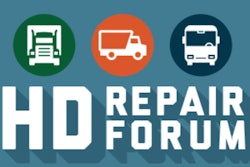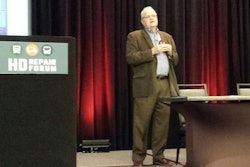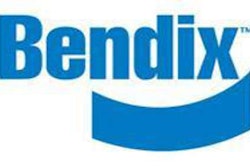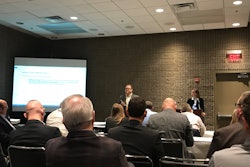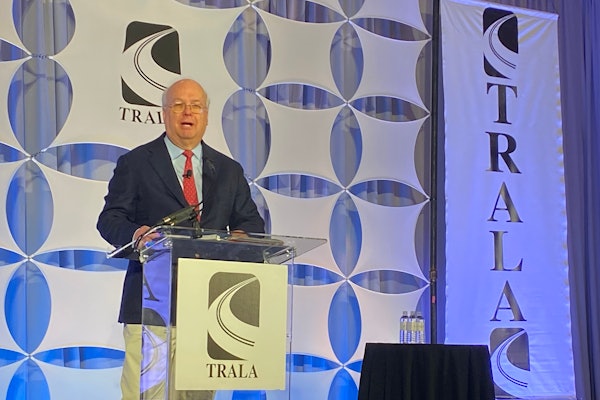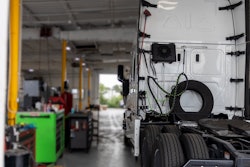Industry experts discussed the relationship between aftermarket repair shops and insurers, the challenges establishing estimates and the value of pre- and post-collision vehicle scans during the inaugural HD Repair Forum held this week in Fort Worth, Texas.
“I would say the biggest challenge is the level of communication needs to be raised,” between repair shops and insurers, says Chris Sterwerf, chief financial officer and chief operational officer, Fairfield Auto and Truck Service.
Sterwerf adds there can be an adversarial relationship between the two parties and a need for improvement in the estimate process so that repairs to the vehicle can be done quickly for the customers.
“There’s a lot of opinions in repairs and a lot of pride attached to the opinions,” he says. “If [there was] better information from the OEMs on how to fix trucks properly, I think the insurance companies and body shops could work better together and have black and white information so it’s objective instead of subjective.”
There can be confusion of what’s the correct repair and it “creates a lot of friction. I think there’s an opportunity to eliminate that friction by having better information we can share so it’s not a debate. It’s fact versus opinion,” Sterwerf adds.
A direct line of communication between the insurance company and the service provider is very important, according to Phil Krier, manager, direct repair program, Great American Insurance Group.
“A lot of times we don’t know what the damages are; we just know we have a wrecked truck that went through your shop,” Krier says. “You need to communicate how severe this is.”
Is it a minor accident that can be fixed quickly or is it a rollover on a 2018 model truck. “You need to communicate it’s a rollover and it’s going to take a lot of time to get this estimate prepared,” he adds.
Tom Davis, vice president of sales and operations, Property Damage Appraisers, says the appraiser often is the middleman, but agrees communication is very important.
“On the auto side, there are a lot of repair standards out there that are pretty cut and dry in most cases. When we get into the [heavy duty] side of the house, there’s not quite as much in black and white,” Davis says. “It’s not just the communication between the repairer and the OEs, but how do we interpret that data for the insurance companies? How do we interpret that data for the end user?”
He adds that the biggest challenge with communication regarding these vehicles is if they’re not moving, they’re not making money.” If the communication isn’t there, these vehicles “sit idle,” which means thousands of dollars lost.
Another issue with repairs is establishing estimates. And, one of the biggest challenges is OEM parts prices, according to Jon Gironda, vice president, H/E and specialty division, SCA Appraisal.
“We write hundreds of heavy truck estimates per week and we see the application of reconditioned, aftermarket and LKQ parts on truck estimates with a lot of our appraisers,” Gironda says. “I think a lot of the appraisers are tending to go with alternate parts versus OEM because they’re simply easier to obtain prices for alternate parts. If OEM parts prices were readily available, it would certainly expedite the appraisal for the claim and we would see OEM parts used more appropriately on a first estimate.”
Ed Reitman, owner, K&R Truck Sales, says parts pricing can be difficult because it can vary based on the state they’re purchased from. For example, a part from Michigan might be cheaper than a part from California. He also stresses that this is a relationship-based business.
“To get consistent parts pricing will be difficult but I think what speeds the process up a lot for us is having that relationship with all manufacturers,” Reitman says. “The pricing is always going to be a sticky situation because of the competition” price discrepancies by region.
Panelists also discussed the importance of pre- and post-collision scanning of trucks.
Chuck Olsen, executive director of operations, AirPro Diagnostics LLC, says the pre-scan is just as important as getting a post-scan to make sure everything is OK with the vehicle. He says the pre-scan will provide technicians with the information they need to research the systems on that repair so that they are done on a timely manner and the “post-repair scan makes sure all those systems are addressed.”
To understand the importance of pre- and post-scans, Adam McEwen, strategic account manager, Bosch Service Solutions, says to look at it from the perspective of the end users, the insurance companies and the repair shops.
“They obviously knew it had issues when it went in, but when it came out there’s a full health report that says all systems are good. That’s a huge value to the owner,” McEwen says. “Now let’s look at the insurance company involved. They see the truck was messed up going in and now the systems are all good. The repair shop doing the pre-scan sees what systems are affected on that vehicle and then when the repairs are done, they know it has a clean bill of health. Look at all parties that are a part of that repair process and try to find a negative.”

